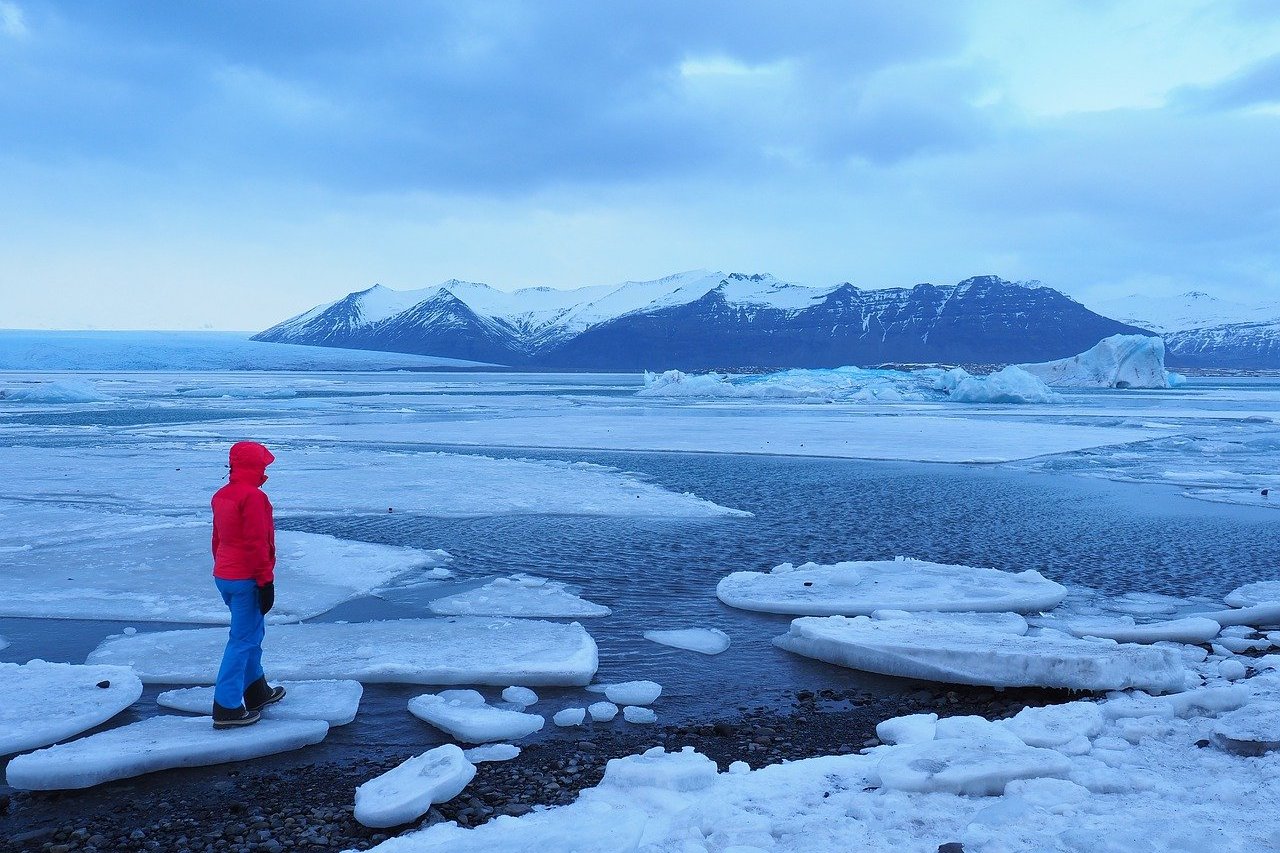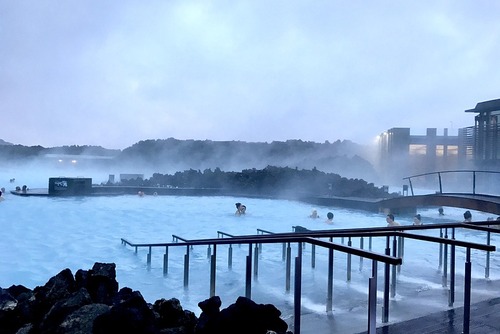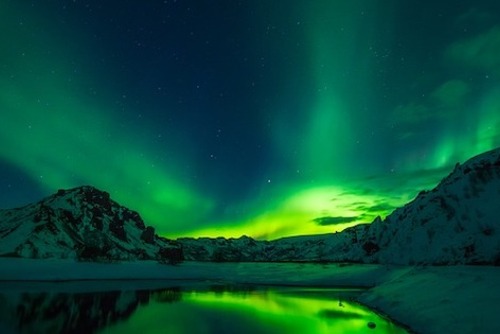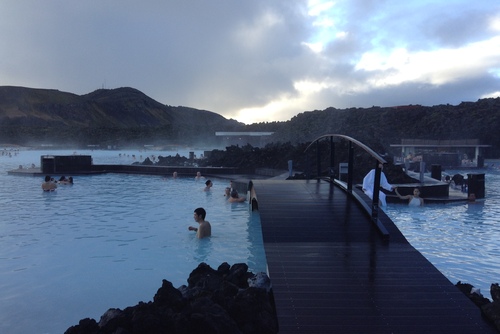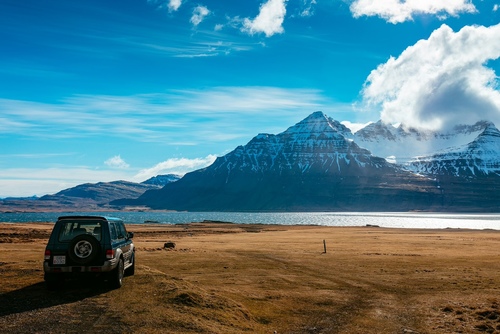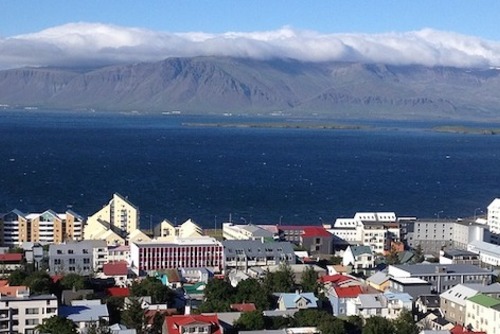Iceland really is a special place that you have to visit at least once in your life.
Plan a trip to this spectacular island to explore volcanoes and ice caps, bathe in hot springs and see some of the most unique tourist attractions on the planet.
Why Visit Iceland?
Iceland is known as the Land of Fire and Ice and is a textbook example of all the most interesting things in geology.
The country is famous for its clean, fresh air, unspoiled, rugged and beautiful nature and uninhabited interior, which is like a huge playing field for nature lovers.
One of the most alluring things to do is to go in search of the Aurora Borealis (Northern Lights), which is a stunning light occurrence that is usually visible in the northern areas of Iceland, Norway, Finland, Sweden, Greenland, Alaska and Canada.
Upon a little research you’ll find there is also a lot more to Iceland.
Whatever takes your breath away, be it spouting hot springs, glaciers, outdoor bathing in hot creeks, volcanoes, craters, huge lava fields, black lava beaches, the Northern Lights, the waves of the North Atlantic, deserted highlands, caves, horses or waterfalls; you find it in Iceland.
Getting Around

Iceland is the perfect holiday destination for those who dream of discovering a magical and mysterious land but you might wonder about the best ways to navigate the country.
You can get an RV rental in Iceland to explore the country, which will provide you with the freedom and flexibility to go where you want, when you want.
Embarking on a self-drive adventure allows you to customize your trip according to your preferences and interests. This is one of the best and cheapest ways to get the most out of your Iceland visit.
Another option is group tours, which are perfect if you have no idea about what to do and simply want to see the highlights of the country without having to drive.
Local and international tour operators can meet every special need or interest you may have – be it extreme hikes or cross country skiing expeditions, filming and photo shooting, location searching, geology, volcanology, extreme caving, botany, ornithology, architecture, etc.
From 1 week Iceland tours, to shorter and longer trips, there are lots of options.
Ultimate Iceland Overland Road Trip Itinerary
Here is the ultimate road trip itinerary for Iceland, where you can discover the highlights of the country in a short period of time.
This itinerary can be adapted for shorter or longer trips depending on how much time you have to travel.
You could travel in a loop, going north from Reykjavik, and traveling east before driving back via the southern coasts, or vice-versa. You could also base yourself in Reykjavik, and do day trips to popular destinations nearby.
Day 1 - Reykjavik
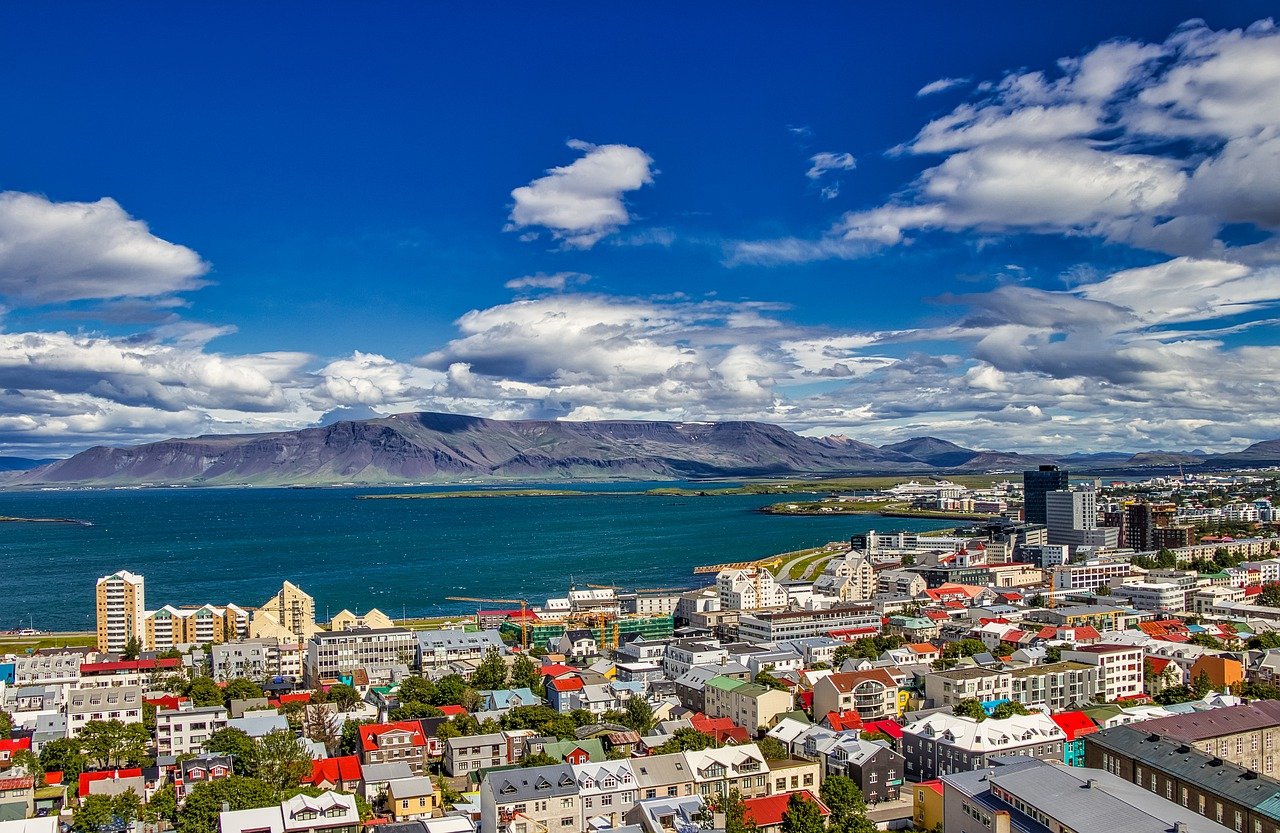
On your first day we recommend getting to know the capital city - Reykjavik.
Walk around, get lost, buy the token Icelandic knitted hat and take in the local sights and culture.
Some of the most popular tourist attractions in Reykjavik include Hallgrimskirkja church, the Sun Voyager artwork, Perlan museum and the Settlement Exhibition where you can learn more about the history of the country.
For a short excursion go visit the Blue Lagoon, a famous thermal pool set in a lava field just outside Reykjavik. You’ll be able to see the steam coming up off the pool from miles away. Queue to pay the entrance fee, put on your swimwear and jump into this hot mesmerizing blue expanse of water. This is definitely one of the unmissable experiences in the country!
Days 2-4 - Golden Circle: The Most Popular Iceland Route

Trips to Iceland wouldn't be complete without the Golden Circle: it is a must for most visitors. This route can be done in a day if you rush it, but a few days to a week is recommended.
First you should visit the scenic national park of Þingvellir (Thingvellir), where you will be able to see a unique rift valley. Here the American and Eurasian tectonic plates are torn apart by the Mid-Atlantic Ridge, which is the meeting point of Europe, Iceland and North America.
The ridge runs through Iceland and causes regular eruptions and earthquakes. Also, the Viking settlers of Iceland founded their parliament at Þingvellir in 930 AD and; thereby, laid the foundations for an independent nation-state in Iceland.
When leaving Þingvellir you will understand how Icelanders are torn between America and Europe, but also realize where the roots of their national pride lie and why this beautiful place is so sacred in the minds of Icelanders.
Going east from Þingvellir the route will take you over a small mountain pass before going through the southern lowlands where you’ll see prosperous farms and summer houses where Icelanders enjoy their weekends away from the city.
After a short drive, you’ll arrive at your next destination, which is truly unique in the world. This is a hot geothermal area called Geysir, the place that spawned the English word ‘geyser'.
Here you’ll see a lot of bubbling hot springs and the very active Strokkur sprouting its hot water up to 30 meters high in the air every 5-7 minutes. Close by is the old Geysir which unfortunately is not active any more.
Gullfoss or the Golden Waterfall, named so after a rainbow that often decorates it like a royal crown, one of the most impressive waterfalls in Iceland, is only a 10-minute drive away. Gullfoss is fed by the glacier river Hvítá which comes from the Langjökull glacier, your next destination.
North of Gullfoss lies probably the best-known mountain road in Iceland, called Kjölur, which is today barren and desolate. Going north into the highland gives the impression that you are leaving civilization and heading into the wilds.
Now head to the Langjökull glacier, the second biggest glacier in Iceland. Depending on your vehicle, or if you book an excursion, it is possible to drive on the glacier itself, which is a unique experience and almost like stepping into another world.
Day 5 - South Coast Glacier
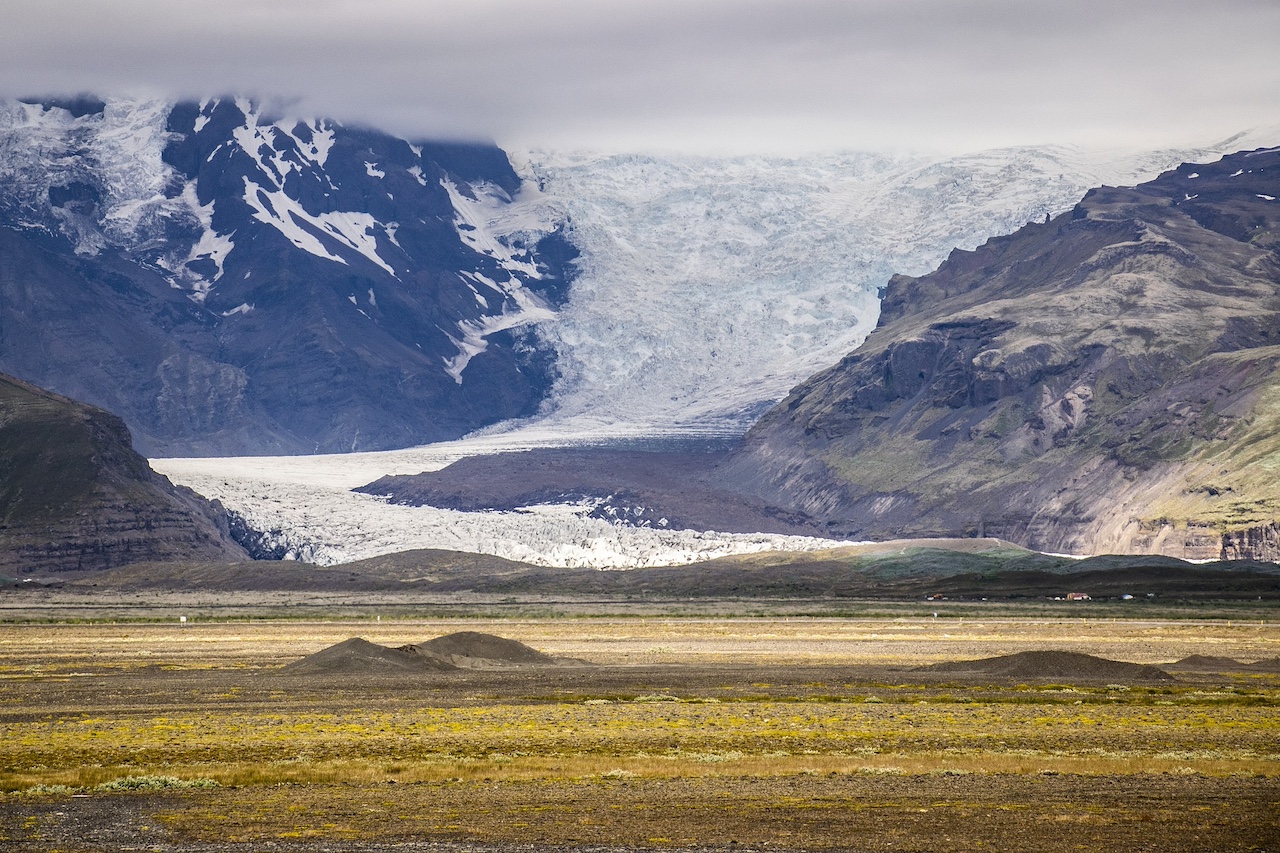
The south coast of Iceland has a lot to offer in terms of diversity of landscape and contrasts in nature.
Along the way you will see the new geothermal power plant, beautiful waterfalls, diverse birdlife and take a drive along black lava beaches. The highlight of this region is driving up to the Myrdalsjokull glacier to admire the magnificent view over the south coast, including the opportunity to go snowmobile-riding during your Iceland vacation.
Driving through the mountain pass of Hellisheidi, close to the Hengill central volcano, which last erupted about 2,000 years ago, is a magical experience.
The heat underneath Hengill, which is still considered active, produces most of the hot water needed to heat every house in Reykjavik. The power within Hengill has now been tamed and close to the road is Iceland’s newest geothermal power plant, the most technologically advanced power plant in the world.
Driving the South Coast Glacier will take you through some of the most fertile farmland in the country where, during summer, you can see farmers working and livestock on the green fields.
After around a 1-hour drive you’ll come to the Eyjafjoll area or Island Mountains, which get their name from the famous volcanic Vestmannaeyjar islands 10 km off the coast.
This area is sheltered by glaciers and mountains and many waterfalls cascade down the mountain hills, such as Seljalandsfoss, a waterfall which you can actually walk behind, and the 60-meter high Skogafoss.
One of the things that makes the south coast different from any other part of Iceland is its long stretching black lava beaches.
The Mýrdalsjökull glacier rises over the coastline and it is probably the highlight of this trip. We recommend driving up to it and experiencing the glacier which, although only frozen water, continuously shapes and makes the Icelandic landscape.
If you book a local tour you can experience driving along the black lava beaches and see and feel how the big waves of the North Atlantic hammer the coast. Specially modified super jeeps are not only fit for driving on sand, but on snow and glaciers as well.
An optional activity you might want to consider is a snowmobiling trip on the Myrdalsjokull glacier.
Day 5 - Thorsmork Valley of the Gods
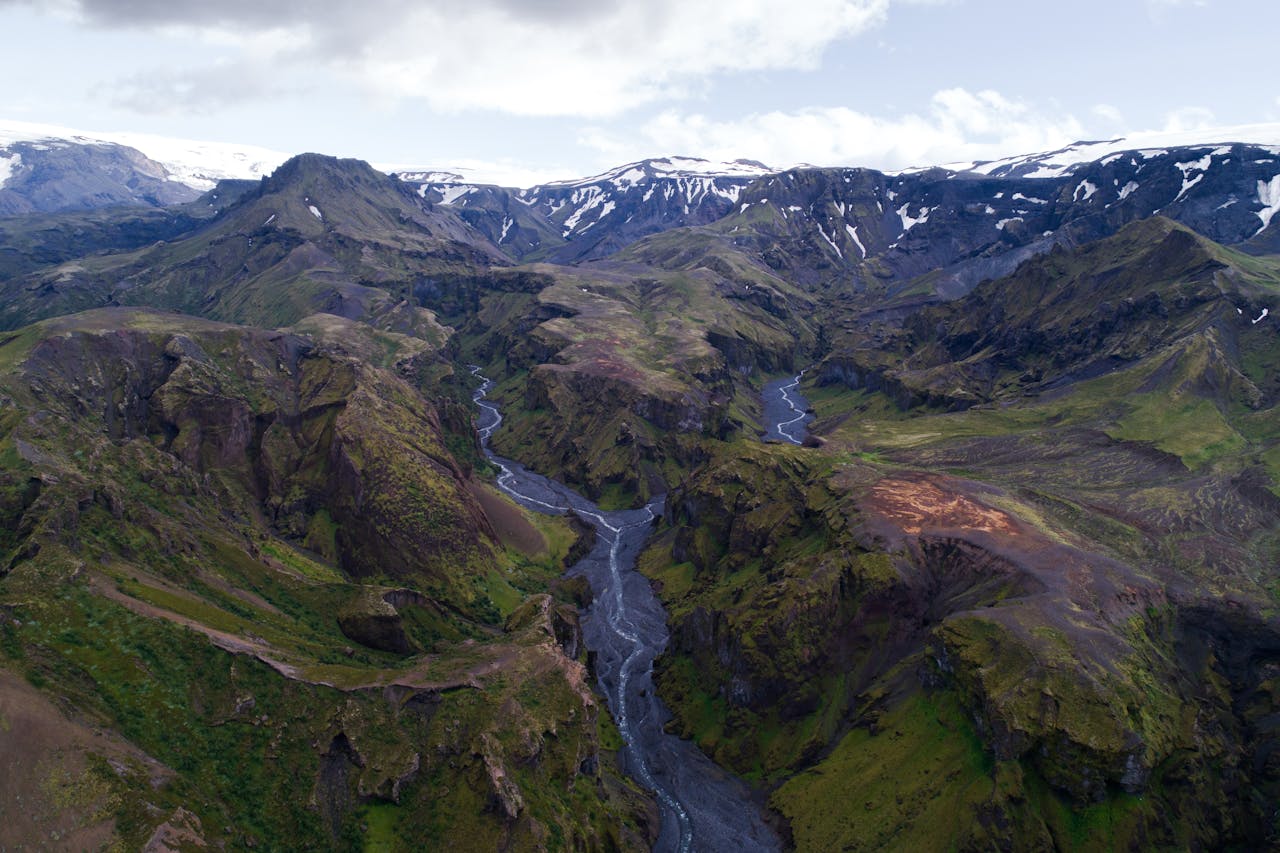
A must-see when you travel to Iceland, the beautiful valley of Thorsmork, together with the majestic Seljalandsfoss waterfall.
Next, if you want a challenge, you could go in search of the canyon Stakkholtsgjá. If you go hiking here you will experience one of the country's most peaceful and beautiful locations.
The most popular places to see here include the valley of Þórsmörk (Thorsmork), named after the Viking god Þór, the god of thunder and lightning.
Þórsmörk is a beautiful sightseeing oasis with a small forest, surrounded by 3 glaciers: Eyjafjallajokull, Myrdalsjokull and Tindfjallajokull, which are protected by glacial rivers and only reachable in powerful jeeps.
The next stop on your itinerary should be the scenic Seljalandsfoss waterfall (40 meters), which is not only for the eyes to enjoy, but also challenges you to take a short hike, as you can actually walk behind it.
After leaving Seljalandsfoss waterfall, walk along the glacial rivers (which have to be crossed if you want to enjoy the peace and beauty of Þórsmörk).
On the way, you can stop to see how the Gígjökull glacier tongue reaches out from the Eyjafjallajökull glacier into a beautiful glacial lagoon surrounded by a moraine.
The glacial lagoon is not the only must-see on the way to Þórsmörk, because after a short while, you can stop again for a hike into a beautifully carved canyon called Stakkholtsgja.
In Stakkholtsgjá you may have to wade a small river in a couple of places, but this canyon is a display of how water can mold even rock and shape the landscape. When you reach Þórsmörk, you will have the opportunity to hike some more in nature.
Þórsmörk provides an overwhelming feeling, as the beauty, peace and quiet is almost intrusive there. Everybody who visits Þórsmörk falls in love with the place, and what you’ll see in the valley in terms of landscape is quite different from any other you have experienced.
If you want to finish your trip early you could drive back to Reykjavik. The road will take you through Iceland’s southern lowland, once an old seabed but now a fruitful farming region, to the region of Eyjafjallajökull and Mýrdalsjökull glaciers.
Day 6 - Reykjanes Peninsula: Iceland’s Youngest Wonder
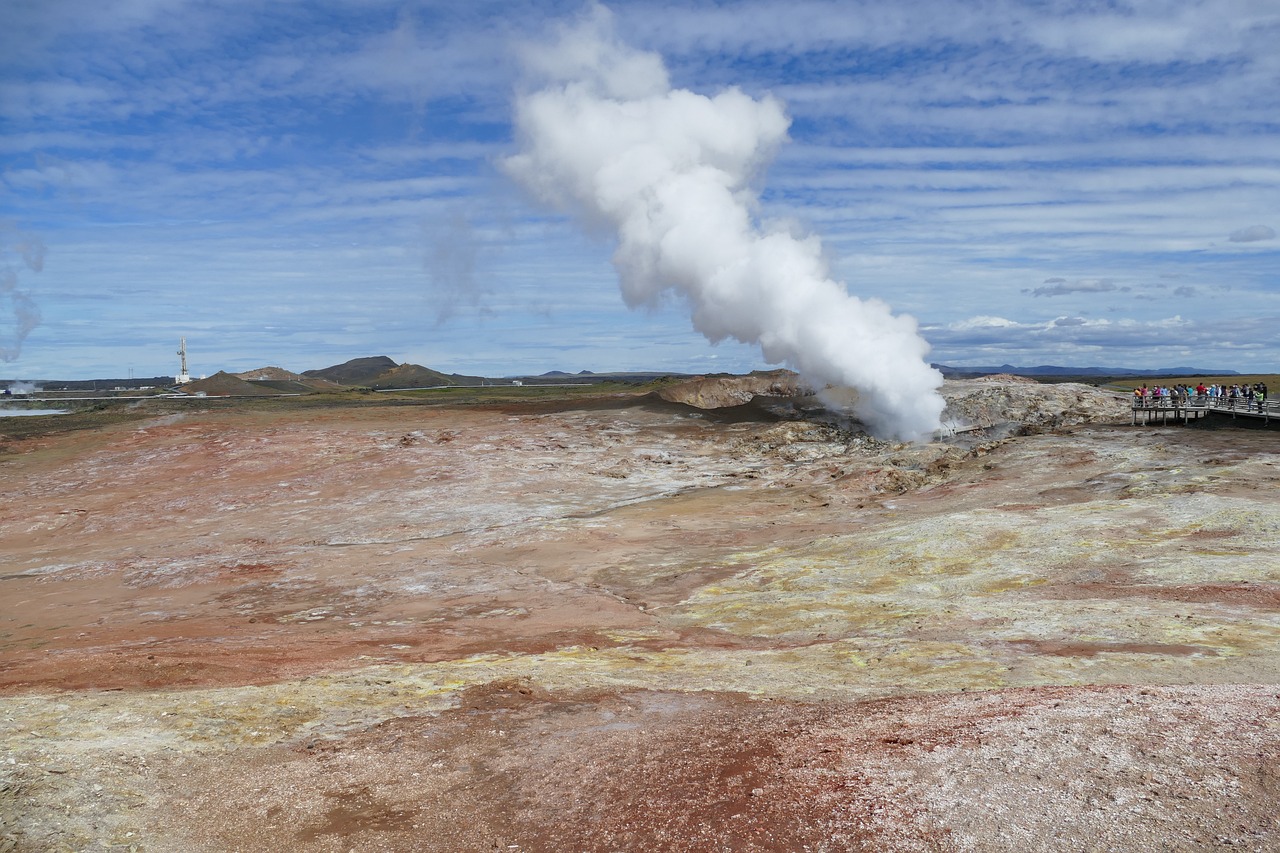
This can be a short half day excursion from Reykjavik, or the end stop on a loop itinerary, but it is the perfect way to finish an Iceland road trip.
Drive through beautiful lava fields, go caving in a lava cave, experience several geothermal hot springs, drive to a sea cliff to see breathtaking birdlife and the thundering North-Atlantic.
The Reykjanes Peninsula, on which Keflavik International Airport is located, is geologically the youngest part of Iceland and is where the North-Atlantic ridge comes ashore.
The peninsula offers an interesting volcanic landscape with craters, lava fields, lava caves and huge amounts of geothermal activity.
You will see the places where fish are dried in the lava field, as it has been done in Iceland for centuries. If you have never been into a lava cave this is your opportunity to experience something new.
When you surface again from the cave you may be a bit disorientated from having spent some time in the darkness underground. Head out and get ready for the next place of interest.
The rough tracks on a volcanic ridge will take you along the beautiful lake Kleifarvatn and at its western end, you’ll reach a geothermal area with hot springs and boiling mud pools.
After having walked through the geothermal area and seen how such a small portion of the power that lies underneath Iceland is tapped off, it’s time to get taken away by another powerful natural phenomenon – the North-Atlantic.
The thundering North-Atlantic batters the south coast of the Reykjanes Peninsula and adds an impressive element to the diversity the area offers. Small detours from the main track lead to sea cliffs where in summer many different types of birds roam in the updraft as the waves of the North-Atlantic come in.
Day 7 - Back to Reykjavik
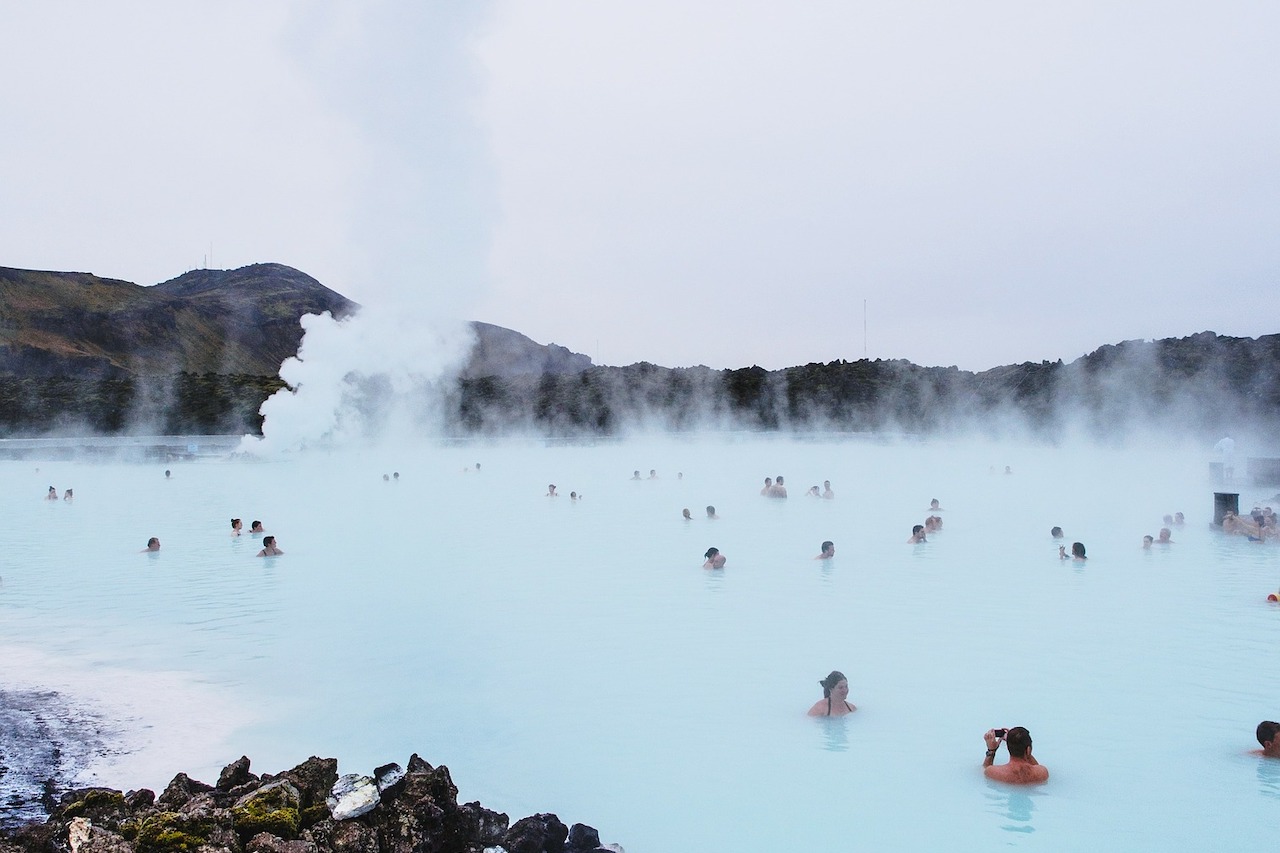
Finish back in the Icelandic capital and get ready for your departure. This itinerary can be adapted according to special wishes or time constraints.
If you are departing, include a stop at the Blue Lagoon, where you’ll be able to take a dip in its healing waters. Now you’ll be relaxed and your flight back home will pass by in an instant. Safe travels!
Iceland Travel Tips
Here are some important things to know before you arrive.
When to Go
Traveling to Iceland in summer is totally different from traveling in winter.
Iceland is a land of ever-changing weather conditions and routes may be altered depending on weather, general road conditions, and seasons.
From June until late August, you’ll have a terrific opportunity to see this original and unspoiled country, plus driving conditions are perfect and roads are clear.
For those travelers who like to test themselves against the elements, there is no better time to visit Iceland than during the winter.
Many tourists traveling to Iceland during the winter do get stranded in the snow, so get advice from locals and take precautions, like checking the weather and packing appropriately.
Getting to Iceland
Most tourists fly into the island’s capital, Reykjavik, and can usually find good deals on return flights with companies like IcelandAir. Vacation packages including return flights, accommodation, transfers and tours are also available.
Once you arrive, renting a car in Iceland offers the freedom to explore the country’s breathtaking landscapes at your own pace. By exploring cheap car rental options in Iceland, you can easily visit remote destinations like the Golden Circle, black sand beaches, and stunning fjords without being restricted by tour schedules.
Accommodation
You can find places to stay throughout Iceland especially along the popular tourist routes, from hotels and hostels to budget b&bs. If you rent an RV you will save money on accommodation costs.
Budget and Costs
You might have heard about how expensive Iceland is, and specifically Reykjavik, so you might be expecting to spend big and constantly be aware of your budget. However, depending on where you live, you may find that this isn’t always the case. Everything is roughly the same price as in London or Paris, if not cheaper.
Food and Drink
There are lots of local food specialities, especially seafood. If you like alcohol be sure to try shots of Brennivin, Iceland’s favorite spirit. Something we can’t stress enough is to eat your main meal at lunchtime: you can eat the same meal for a fraction of the dinner price.
Language
In Iceland people speak Icelandic, although most also are fluent in English which they learn in school from an early age. We do recommend learning some basic Icelandic phrases before arriving though to impress local people.
Safety Considerations
One of the reasons that many people not only want to travel, but also to live in Iceland, is that it’s known to be one of the most (if not the most) peaceful places on Earth.
Despite having been stricken by a banking crisis a few years ago, it has also become one of the most progressive countries in the world. What’s more, it has a 100 percent literacy rate and a high tolerance rate, which keeps crime and violence to a minimum.
You really are unlikely to encounter any issues when traveling around Iceland!
Embark on your Dream Trip to Iceland!
So there you have it, the ultimate road trip itinerary for Iceland, which includes all of the most breathtaking natural attractions, including the Golden Circle, Gullfoss and the Blue Lagoon, to name a few.
Hopefully our itinerary has helped you to put together the tour of your dreams in the Land of Ice and Fire. Don’t worry if you don't have enough time or a big enough budget for everything, that’s your excuse to go back in the future!
Now it’s your turn. Fly to Iceland and may the fun begin!

